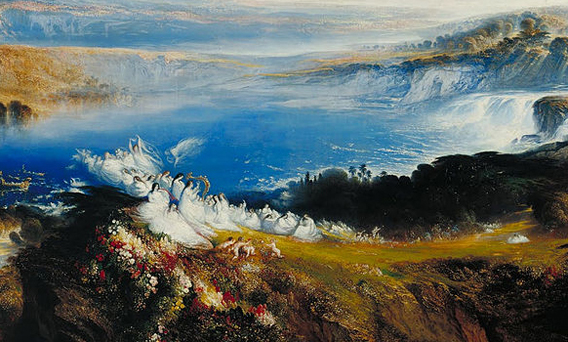Somewhere in the vastness of space there is a planet. On this planet (which is far from our own) there is no strife, no war, no civil unrest, no family feuds. The inhabitants go peaceably about their business, and all is blissful contentment. This state of being creates no apathetic boredom (as we on our own strife-torn world might imagine it would), because no other state is known to them. In our own earthly terms, the inhabitants of this happy planet are living in paradise and dining on milk and honey, and their times are a perpetual golden age.
This blissful existence has continued for generations, with nothing to disturb it. Then one day: catastrophe. Voices raised in anger are heard as two neighbours squabble over some petty difference of opinion. Shocking enough among such tranquillity. But worse is to follow. The next day a horrified couple discover a body in long grass beside a river bank, bloody and beaten: clearly the victim of a murder. In the days and weeks to come the traumatised inhabitants are drawn deeper into a scenario of escalating violence. What had begun as local disputes about whose property ended exactly where extends to whole territories, as communities vie for control of what up till then had been regarded as worthless tracts of unwanted land. Differences of belief (especially those which sanctify life) become reasons for massacre. Wars flare, creating misery and reasons for resentment for generations yet unborn. What has happened to this once-happy planet?
Back here on planet Earth, it's a politically popular wish expressed by Miss South Carolina (and almost every other aspiring beauty pageant queen). What is wished for? World peace. A final end to all the suffering and strife which so plagues our earthly existence. A simple desire that for once we would all just get along with each other, respect each others' beliefs, territory, property, whatever. And then, amazingly, it actually happens. Differences are resolved, theft becomes meaningless and redundant, war becomes obsolete. Peace prevails at last, and Miss South Carolina's expressed desire for a new and peaceful world becomes an astonishing and precious reality.
The universe keeps its own checks and balances. A star explodes in incandescent death, another star bursts into life. A planet of turmoil becomes a planet of peace, and another planet, far distant, whose existence up till then had known no strife is plunged into turmoil. Perhaps our strife-torn world has a greater cosmic value - even a function - beyond our own understandable longing for tranquillity. Be careful what you wish for, Miss South Carolina...
Hawkwood
Top image: Robert Duncanson: Land of the Lotos Eaters (detail), 19th century
Second image: Pieter Bruegel: The Triumph of Death (detail), 16th century
Third image: John Martin: The Plains of Heaven (detail), 19th century





















































































